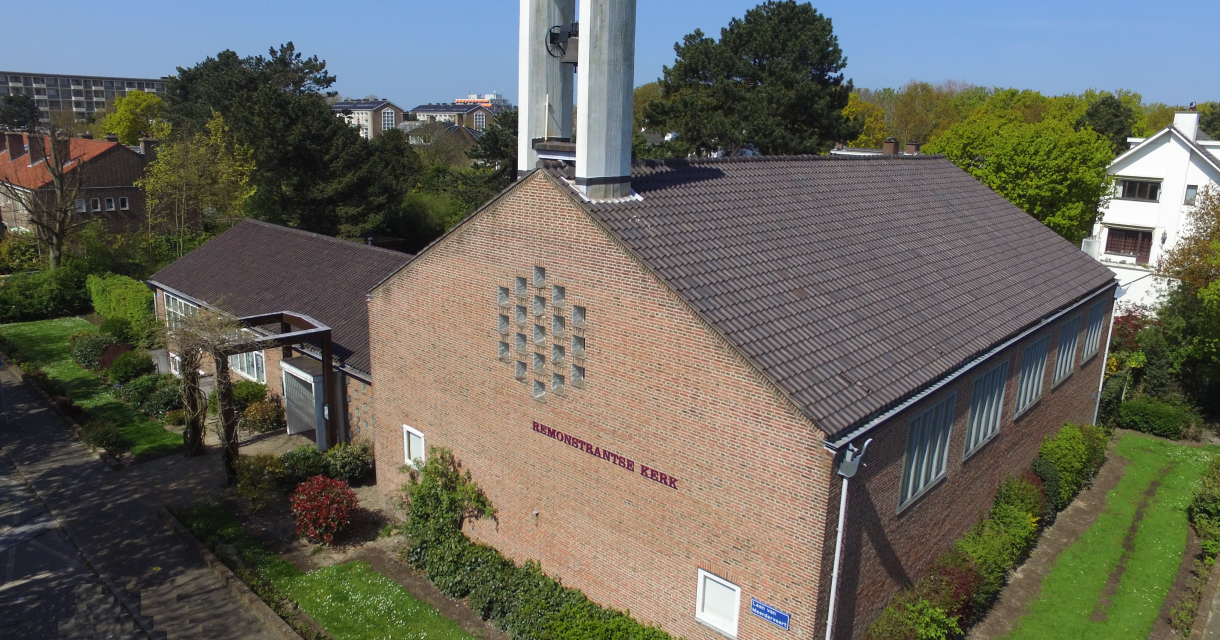
Built as a Remonstrant 'New Church', to distinguish it from the older (now demolished) Remonstrant Church on the Laan in the center of The Hague. The church was designed by architect F. Sevenhuysen.
Remonstrants value people's own wisdom and insights. They want to discuss this with each other in order to shape their own thinking and beliefs. They find inspiration and direction in the Bible and the (liberal) Christian tradition, but are also open to insights from philosophy, the arts and other religious traditions. Remonstrants believe that the truth has many faces and stand for freedom and tolerance in religious, cultural and social life.
History
The Remonstrants have existed for almost four hundred years and therefore have a long history. Resistance to dogmatics and religious coercion led to the emergence of the Remonstrants. The need for freedom in faith has been essential to the Remonstrant tradition over the years. After the establishment of the Republic of the Seven United Netherlands around 1570, the Reformed Church had become the official state church. The doctrine and organization of this church were strongly based on Calvin's views. There was therefore a strong desire to introduce binding confessions. A number of more moderate ministers opposed this. In 1610 the court chaplain Rev. Uytenbogaert drew up a protest piece on behalf of this group, the so-called Remonstrance, which was submitted to the government and church.
Arminius and Gomarus
This Remonstrance continued on the question of whether the church should rule over the state or whether the state should rule over the church, and on the theological question of election (predestination). This issue in particular was brought to a head by the group that wanted to introduce binding confessions. Both parties put forward two Leiden professors as their champions, namely Arminius (remonstrant) and Gomarus (counter-remonstrant), both of whom are not fighting natures.
In 1618 a church meeting, the so-called Synod of Dordrecht, was convened in Dordrecht to settle the disputes. The chairman was Rev. Bogerman from Leeuwarden, an outspoken and fierce counter-remonstrant. The Remonstrants were not invited as equals, but summoned as defendants, against which their astute spokesman Episcopius protested in vain. The battle then ran so high that Bogerman became agitated and on January 14, 1619 drove the Remonstrants away briefly and well. Shortly thereafter, two hundred ministers were deposed and many of them exiled. In the same year 1619, these founded their “Remonstrant Brotherhood” in Antwerp.
Assassination attempt
Many soon returned in secret and began to hold their own church services in Amsterdam. From 1631 this even happened openly. Although they remained officially banned in the Republic, they were turned a blind eye. At that time, they built their many hidden churches. They were able to found their own training school for ministers in Amsterdam, which was transferred to Leiden in 1873. Especially in the beginning, the Remonstrants were hated and vilified. For example, in 1623 they were wrongly charged with the murder of Stadholder Maurits.
After 1850 the Remonstrants experienced a certain growth because many liberal reformers, tired of the struggle and confusion, left the Reformed Church and joined a Remonstrant Reformed Congregation.
Accessibility
The church can be reached by public transport with the following lines: RR3 (stop Appelstraat), 23 (Savornin Lohmanplein. The Remonstrant Church is located on the elevated part of Laan van Meerdervoort (no. 955) near Appelstraat. There is free parking in the immediate vicinity of the church (high on Laan van Meerdervoort and high on Pioenweg), but paid parking is available on Laan van Meerdervoort low and low on Pioenweg between 5 p.m. and 9 p.m.

